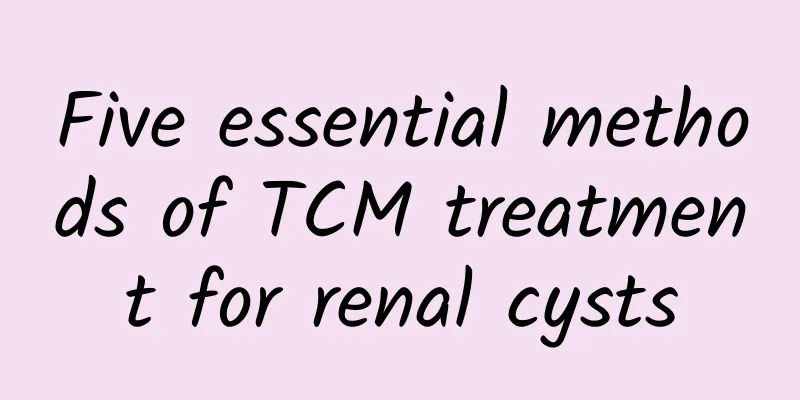Pancreatic Cystadenoma Surgery

|
Pancreatic cystadenoma is a relatively rare tumor. The disease develops slowly and the tumor grows slowly, but if not treated in time, it may develop into pancreatic cancer. Patients with pancreatic cystadenoma often experience abdominal pain, and some patients may also experience a mass in the abdomen. If you have a pancreatic cystadenoma, you must suppress it through surgery. So, how is pancreatic cystadenoma surgery performed? 1. Surgical treatment of pancreatic cystadenoma Surgery is the only treatment for pancreatic cystic tumors. Cystadenomas often have intact capsules and are more common in the body and tail of the pancreas. Small cystadenomas can be removed; most patients require a pancreatic body and tail resection including the spleen. Cystic tumors of the pancreatic head can be treated with pancreaticoduodenectomy. What is pancreatic cystadenoma? Pancreatic cystadenoma is a rare exocrine pancreatic tumor. It accounts for approximately 0.6% of pancreatic tumors. Pancreatic cystadenoma grows slowly, generally has a long history, and can turn into pancreatic cystadenocarcinoma. Clinical manifestations: Upper abdominal distension or dull pain, and upper abdominal mass are the main characteristics of pancreatic cystic tumors, followed by weight loss, jaundice, gastrointestinal bleeding and gastrointestinal symptoms. 3. Causes The etiology is still unclear, but it may be: ① invasion by ectopic digestive tract primordial cells or distorted Brunner glands in the duodenum; ② originating from acinar cells in the glandular duct; ③ originating from the pancreatic duct epithelium; ④ residual fetal tissue. Cystadenocarcinoma may be caused by the malignant transformation of mucinous cystadenoma. IV. Clinical manifestations 1. Abdominal pain Abdominal pain is an early symptom and may be dull pain, bloating, or stuffy discomfort. As the tumor grows larger, it may compress the stomach, duodenum, transverse colon, etc., causing them to shift and causing symptoms of incomplete gastrointestinal obstruction. In addition to abdominal pain, it may also be accompanied by loss of appetite, nausea, vomiting, indigestion, and weight loss. 2. Abdominal mass An abdominal mass is the main sign. The lumps are mostly located in the middle of the upper abdomen or the left upper abdomen. Small ones can only be touched, while large ones can occupy the entire abdominal cavity. They are round or oval in shape and tough in texture. Huge lumps feel cystic to the touch but are not tender. A small number of cystic tumors located in the head of the pancreas can cause jaundice due to compression of the common bile duct by the cyst. When the tumor compresses the splenic vein or invades the splenic vein, it may cause thrombosis, resulting in enlargement of the spleen and varicose veins of the gastric fundus and lower esophagus, and even vomiting of blood. |
<<: How long can you live with stomach cancer?
>>: .There is a tumor in my stomach
Recommend
What are the symptoms of rice flour allergy
Rice noodles are a relatively common food and the...
Boys are thin on the upper body and fat on the lower body
Everyone's body shape is different. Some peop...
Acute renal failure is caused by them
In recent years, the incidence of kidney disease ...
Possible causes of left abdominal pain
Some people experience pain in the left abdomen i...
What is the scraping technique?
Gua Sha is a very good treatment method. For frie...
How to relieve menstrual cramps that wake you up in the middle of the night
Dysmenorrhea is a very common symptom. When women...
How to turn white scars back to flesh color
White scars are also common in our daily life. Wh...
I feel uncomfortable in my lower body and I always want to urinate
Some people feel discomfort in their lower body a...
What do the fifteen collateral vessels represent? What are their functions?
The twelve meridians and the Ren and Du meridians...
What is the triple burner? What is the function of the triple burner?
We usually say "five internal organs and six...
What diseases can cause numbness and stiffness in the lower limbs?
Some people may experience loss of sensation, num...
Alcohol allergy usually takes a few days to heal
In fact, many people are allergic to alcohol in l...
What diseases can hypothyroidism cause? Is it serious?
Many friends may not have heard of what hypothyro...
Treatment of rheumatism and rheumatoid arthritis
Rheumatoid arthritis is actually a common joint d...
Can Huoxiang Qingwei Capsule cure bad breath?
Huoxiang Qingwei Capsule is a Chinese patent medi...









